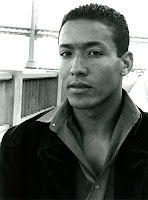Brave Carthaginian
Let us begin from the beginning, with the exposition of the Hermaion of El Guettar, a cairn of  stone and silex estimated at over 40,000 years, and perhaps one of mankind's first spiritual and cultural expressions. Found in the area of Gafsa, northwestern Tunisia, it is one of a myriad of artifacts and vestiges, some strangely carved and faceted, testifying to man's early presence in Tunisia that are exposed in the Bardo's fine Prehistoric collection. We can date the end of the prehistoric era with the Aral of the Phoenicians riv around 1000 BC.
stone and silex estimated at over 40,000 years, and perhaps one of mankind's first spiritual and cultural expressions. Found in the area of Gafsa, northwestern Tunisia, it is one of a myriad of artifacts and vestiges, some strangely carved and faceted, testifying to man's early presence in Tunisia that are exposed in the Bardo's fine Prehistoric collection. We can date the end of the prehistoric era with the Aral of the Phoenicians riv around 1000 BC.
The greatest naval power of the Mediterranean in the third century BC was the North African city of Carthage near modern day Tunis. The Carthaginians were orginally Phoenicians and Carthage was a colony founded by the Phoenician capital city of Tyre in the ninth century BC; the word "Carthage" means, in Phoenician, "the New City." The Phoenicians, however, were conquered by the Assyrians in the sixth century BC, and the conquered by the Persians; an independent Phoenician state would never again appear in the Middle East.
Phoenician objet d'art that we find today is comprised of rather small objects. Most are made of gold, ivory, semiprecious stones, silver, glass, bronze and terra cotta. Also, large stone objects survive. Less durable items such as carved wood and fabric are almost very rare or not to be found at all.
 stone and silex estimated at over 40,000 years, and perhaps one of mankind's first spiritual and cultural expressions. Found in the area of Gafsa, northwestern Tunisia, it is one of a myriad of artifacts and vestiges, some strangely carved and faceted, testifying to man's early presence in Tunisia that are exposed in the Bardo's fine Prehistoric collection. We can date the end of the prehistoric era with the Aral of the Phoenicians riv around 1000 BC.
stone and silex estimated at over 40,000 years, and perhaps one of mankind's first spiritual and cultural expressions. Found in the area of Gafsa, northwestern Tunisia, it is one of a myriad of artifacts and vestiges, some strangely carved and faceted, testifying to man's early presence in Tunisia that are exposed in the Bardo's fine Prehistoric collection. We can date the end of the prehistoric era with the Aral of the Phoenicians riv around 1000 BC.The greatest naval power of the Mediterranean in the third century BC was the North African city of Carthage near modern day Tunis. The Carthaginians were orginally Phoenicians and Carthage was a colony founded by the Phoenician capital city of Tyre in the ninth century BC; the word "Carthage" means, in Phoenician, "the New City." The Phoenicians, however, were conquered by the Assyrians in the sixth century BC, and the conquered by the Persians; an independent Phoenician state would never again appear in the Middle East.
Phoenician objet d'art that we find today is comprised of rather small objects. Most are made of gold, ivory, semiprecious stones, silver, glass, bronze and terra cotta. Also, large stone objects survive. Less durable items such as carved wood and fabric are almost very rare or not to be found at all.

No comments:
Post a Comment